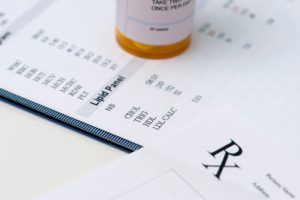 LDL (bad) cholesterol levels can be brought down by new lipid-lowering drugs, according to a recent study. The new therapy, known as anti-PCSK9 antibodies, is added to other lipid-lowering treatments to better help patients reduce their LDL cholesterol.
LDL (bad) cholesterol levels can be brought down by new lipid-lowering drugs, according to a recent study. The new therapy, known as anti-PCSK9 antibodies, is added to other lipid-lowering treatments to better help patients reduce their LDL cholesterol.
Gene mutations for the PCSK9 protein have been linked to high cholesterol levels because the protein binds to the LDL receptor and this way raises LDL. So far, the FDA approved two anti-PCSK9 antibodies: alirocumab and evolocumab.
Advertisement
Lead author of the study Ioanna Gouni-Berthold said, “Both anti-PSCK9 antibodies have cardiovascular outcome studies ongoing with results expected in 2017. We are looking forward to them since it is rather unusual to have results of large outcome trials so soon after the launch of a drug in the market.”
What is LDL, the ‘bad’ cholesterol?
Cholesterol comes in two forms: Low-density lipoprotein (LDL) and high-density lipoprotein (HDL). LDL is the type we generally refer to as “bad” and HDL is the “good” kind. But what makes cholesterol good or bad?
LDL can stick to the walls of your arteries, obstructing the blood flow. HDL, on the other hand, moves cholesterol to the liver for removal. Cholesterol is essential to our body, so it’s imperative to maintain a healthy balance.
Higher levels of LDL cholesterol have been linked to higher risks of heart disease and cardiovascular events, that is why it’s important to maintain lower levels of LDL compared to levels of HDL, which should typically be higher.
How to lower LDL cholesterol?
What can you do to ensure your blood work looks great for your next physical? Here are four key ways to cut your “bad” LDL cholesterol, up your “good” HDL cholesterol, and improve your overall health:
1. Get your blood checked
As the Centers for Disease Control and Prevention (CDC) reminds us, high cholesterol can be symptomless – there’s no way to tell how yours measures up. That’s why getting regular blood tests as part of your physicals is important. The test, a lipoprotein profile, measures several kinds of cholesterol and triglycerides. These are the numbers to watch for. Total cholesterol should be less than 200 mg/dL, LDL or “bad” cholesterol should be less than 100 mg/dL, HDL or “good” cholesterol should be 40 mg/dL or higher, and triglycerides should be less than 150 mg/dL.
The National Cholesterol Education Program recommends getting your cholesterol checked every five years, unless your doctor advises otherwise.
2. Get your exercise
Regular physical activity can help you maintain a healthy weight, which is a key part of keeping cholesterol levels in the healthy range. The Surgeon General recommends that healthy adults get two-and-a-half-hours of moderate-intensity exercise every week. Start with a short walk in your neighborhood or around the indoor shopping mall. Before you know it, you’ll look forward to the activity and make it a daily habit.
Are you a few pounds over fit and trim? Your physician can give you more information on what constitutes a healthy weight for your particular frame.
3. Eat better
Cutting the cholesterol in your diet is a good way to cut the bad cholesterol in your blood. Avoiding saturated fats (red meat, poultry, full-fat dairy products) and trans fats (look for them in processed foods, crackers, and baked goods) is key, as well as reducing your intake of dietary cholesterol. Fats like monounsaturated fats and polyunsaturated fats (nuts, fish, avocados, vegetable oils, for example) can lower your dangerous blood cholesterol levels because they contain healthy fats.
Eating fiber can also cut your cholesterol levels. The Heart and Stroke Foundation of Canada recommends eating 21 to 38 grams of fiber each day.
Advertisement
4. Stop smoking
Here’s one more reason to toss out those cigarettes for good. Smoking makes the potentially dangerous effects of cholesterol even worse. Smoking can speed up atherosclerosis or artery hardening, the CDC warns, and significantly increases your risk of heart disease and stroke. Add high cholesterol into the mix, and you’ve got a potentially deadly combination.
Fortunately, quitting smoking will lower that risk. Talk to your doctor if you’re having trouble giving up the habit.
